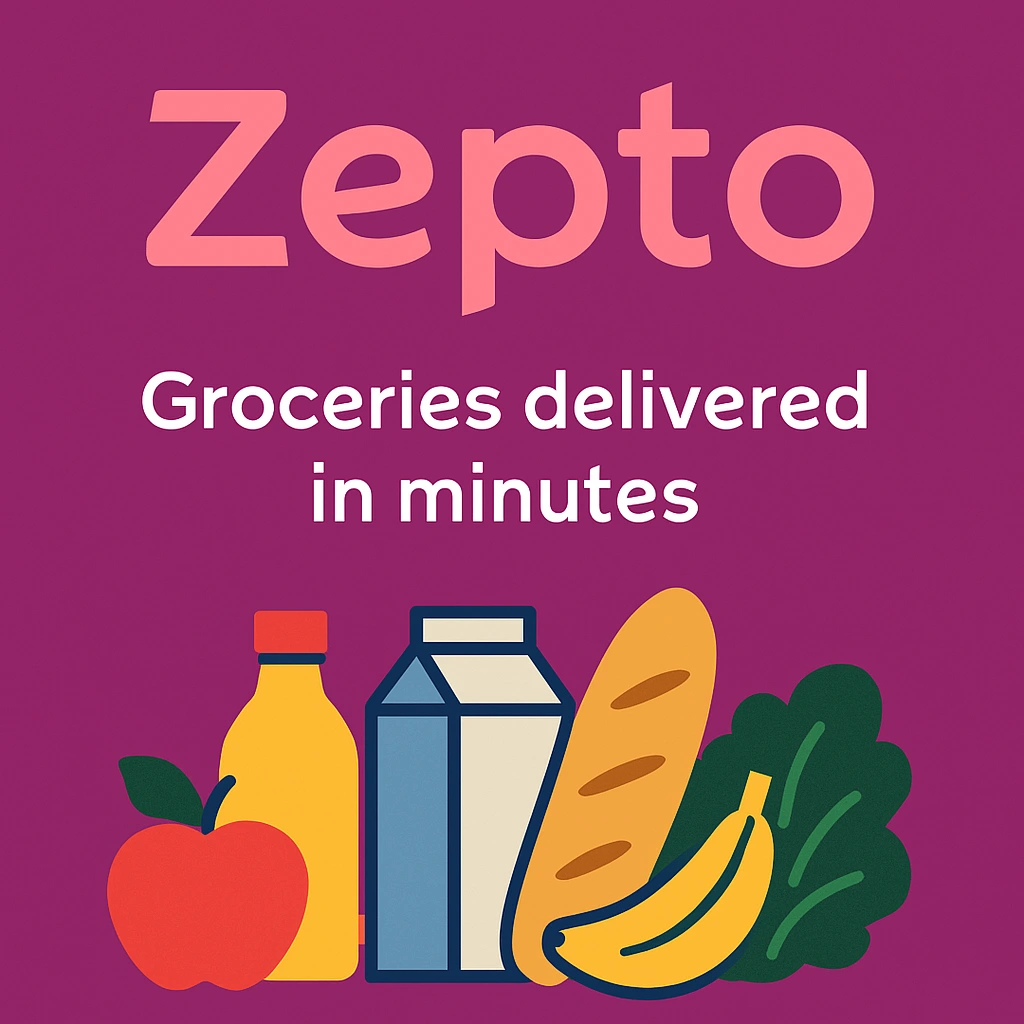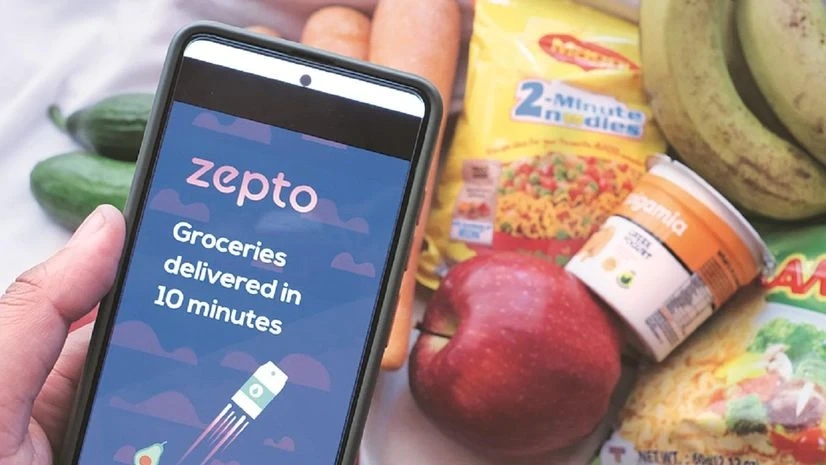
Zepto, the quick commerce disruptor that has captured India’s urban market with an audacious promise: groceries delivered within 10 minutes. Founded by two Stanford dropouts, Zepto swiftly carved out a niche in an already crowded space, combining innovative marketing strategies with cutting-edge technology and operational excellence. From targeted hyperlocal SEO and thoughtfully crafted influencer collaborations to strategic outdoor campaigns, Zepto has built a distinctive brand that blends speed with relatability.
In this blog, we explore the key marketing strategies that propelled Zepto’s rapid growth and the valuable lessons marketers can draw from their success story.
Table of Contents
- About Zepto
- Target Audience Analysis
- Zepto’s Marketing Strategy Breakdown
- Zepto vs Competitors
- In Conclusion
- Frequently Asked Questions
About Zepto
Zepto is one of India’s leading quick commerce startups, promising 10-minute deliveries for groceries and essentials. Founded in 2021 by Stanford dropouts Aadit Palicha and Kaivalya Vohra. Zepto entered a highly competitive market already featuring established players like Blinkit, Swiggy Instamart, and BigBasket.
What differentiated Zepto from the beginning was not just its promise of speed but its meticulous execution of branding, communication, and positioning. With significant backing from investors, the brand made an immediate mark through a data-driven, digital-first marketing strategy. The company has since grown its revenue to a staggering ₹11,110 crore in FY25, a 150% jump from the previous fiscal year, demonstrating the power of its aggressive execution and disciplined expansion. (Source: Entrackr, July 2025)
Target Audience Analysis
Zepto’s core audience is urban consumers aged between 18 and 40 who seek instant gratification and convenience. These are working professionals, students, and young families living in metro cities like Mumbai, Bangalore, Delhi, and Chennai. Zepto’s business model and marketing focus heavily on these high-density urban areas, where the demand for rapid delivery is highest.
Their audience is digitally native and values time above everything else. Zepto leverages this insight to design every aspect of its communication to highlight speed, availability, and freshness. The messaging focuses on a number of key “need it now?” scenarios:
- Panic buying situations (e.g., running out of milk or diapers).
- Last-minute party preparations or impulse purchases.
- The desire to avoid the hassle of traditional grocery shopping.
Zepto’s Marketing Strategy Breakdown
SEO and Content Strategy
Zepto has built a formidable SEO presence by strategically targeting hyperlocal keywords. This strategy is essential for any quick commerce brand, as searches are often location-specific. Terms like “instant grocery delivery in Mumbai,” “ delivery near me,” and specific product-related long-tail queries such as “fresh fruits delivered fast” are central to their approach.
This approach, combined with city-specific landing pages and partner-driven backlinks, has enabled Zepto to compete in organic rankings despite being a relatively new player. This nuanced approach to content and SEO is a key reason why a specialised digital marketing agency is so valuable for scaling businesses.
Social Media Marketing
Zepto has carved a distinct and appealing personality online, with a focus on quirky and contextual posts that resonate deeply with urban millennials and Gen Z. As of early 2025, their Instagram handle @zeptonow boasts over 581 K followers, a testament to their successful strategy.
Their content seamlessly blends product benefits with real-life, humorous moments. They use short, snackable reels and carousel ads with minimalist visuals and bold, punchy typography. The brand’s use of a signature red and black palette ensures instant recognition. The tone is always conversational and relatable, with taglines like:
- “Your milk in 600 seconds”
- “Forgot sugar? We didn’t.”
- “Cravings don’t wait, neither do we”
This creative, consistent approach has created a loyal and engaged community.

Influencer Marketing Strategy
Zepto’s influencer strategy is a masterclass in native advertising. They collaborate with content creators who authentically reflect daily lifestyle needs, focusing on product placement that feels natural rather than overtly promotional. This situational approach builds trust and demonstrates the utility of their service in everyday life.
For example, they have partnered with:
- Home chefs who need an instant delivery of a missing ingredient for a recipe.
- Comic creators who dramatise “panic buy” moments, like running out of snacks during a movie night.
- Fitness influencers showcasing their healthy grocery orders from Zepto to support a clean-eating regimen.
A recent campaign with creators like Shayan Roy and Vishnu Kaushal successfully drove engagement by highlighting these last-minute situations and positioning Zepto as the perfect saviour. This creative and highly targeted strategy is a hallmark of an effective advertising agency in Ahmedabad or any major city that understands modern consumer behaviour.
Paid Media and Performance Marketing
Zepto’s paid media strategy is hyper-targeted and performance-focused. They invest heavily in Google Ads and Meta ads, precisely targeting pin codes and leveraging first-party data to reach high-intent audiences.
Their paid campaigns are built for efficiency and have clear CTAs like “Order Now, Get in 10 Mins.” What works for them includes:
- Search ads that dominate near-me queries.
- YouTube bumper ads with 6-second, punchy messages.
- In-app interstitial ads within popular food, music, and utility apps.
This sophisticated approach allows them to spend efficiently across city-specific campaigns, driving both brand awareness and direct app installs. The partnership with advertising technology firms like The Trade Desk to link digital campaigns with real-time sales insights further exemplifies their data-driven approach. (Source: The Financial Express, June 2025)
OOH and Hyperlocal Campaigns
Zepto’s marketing genius isn’t limited to the digital realm. They have launched several successful outdoor (OOH) campaigns, especially in Mumbai and Bangalore. Billboards with witty, contextual lines like “Atta? We gotcha” or “Missing milk? Chill! Placing them near residential hubs creates an instant connection with consumers.
What truly stands out is the consistency of messaging across all platforms, both online and offline. Even QR codes on billboards link directly to app install or offer-specific landing pages, ensuring a seamless journey from awareness to action. These hyperlocal campaigns reinforce the brand’s promise of 10-minute delivery and build a strong sense of trust and familiarity within the local community.
Zepto vs Competitors: The Strategic Differentiator
While the quick commerce market is fierce, Zepto has carved out a unique space. Here’s a comparison that highlights its strategic positioning:
| Feature | Zepto | Blinkit | Swiggy Instamart |
|---|---|---|---|
| Delivery Time | 10 mins | 10 mins | 15-30 mins |
| Target Audience | Gen Z, young professionals | Urban millennials, families | Families, working professionals |
| Brand Tone | Bold, fast-paced, youthful, functional | Playful, meme-led, contextual | Reliable, functional |
| Influencer Marketing | Situational & lifestyle-led, problem-solution | Meme & trend-focused, cultural relevance | Utility + entertainment |
Zepto’s primary differentiator is its laser-focused on urgency and functional efficiency. While Blinkit often leans on meme culture and pop-culture trends to connect with its audience, Zepto positions itself as a reliable, everyday saviour for urgent needs. It’s a more focused and less chaotic brand tone that appeals directly to users who prioritise efficiency above all else. This strategic clarity is what enables them to stand out in a crowded market.
Final thoughts
As the quick commerce market matures, the battle for dominance will move beyond just the 10-minute delivery promise. The next phase of marketing in this space will be defined by a shift from aggressive customer acquisition at any cost to maximising customer lifetime value (LTV) and profitability. Marketing budgets will become more targeted, with a greater emphasis on personalisation, loyalty programs, and retention campaigns. We are already seeing this with platforms leveraging retail media, where brands pay for prime visibility within the app, a new, high-margin revenue stream for companies like Zepto and Blinkit. As these platforms become more integral to the retail ecosystem, the role of a digital marketing agency will expand to not only manage external campaigns but also to optimise a brand’s advertising spend and product placement within these powerful quick commerce platforms, marking a significant evolution in retail marketing.



